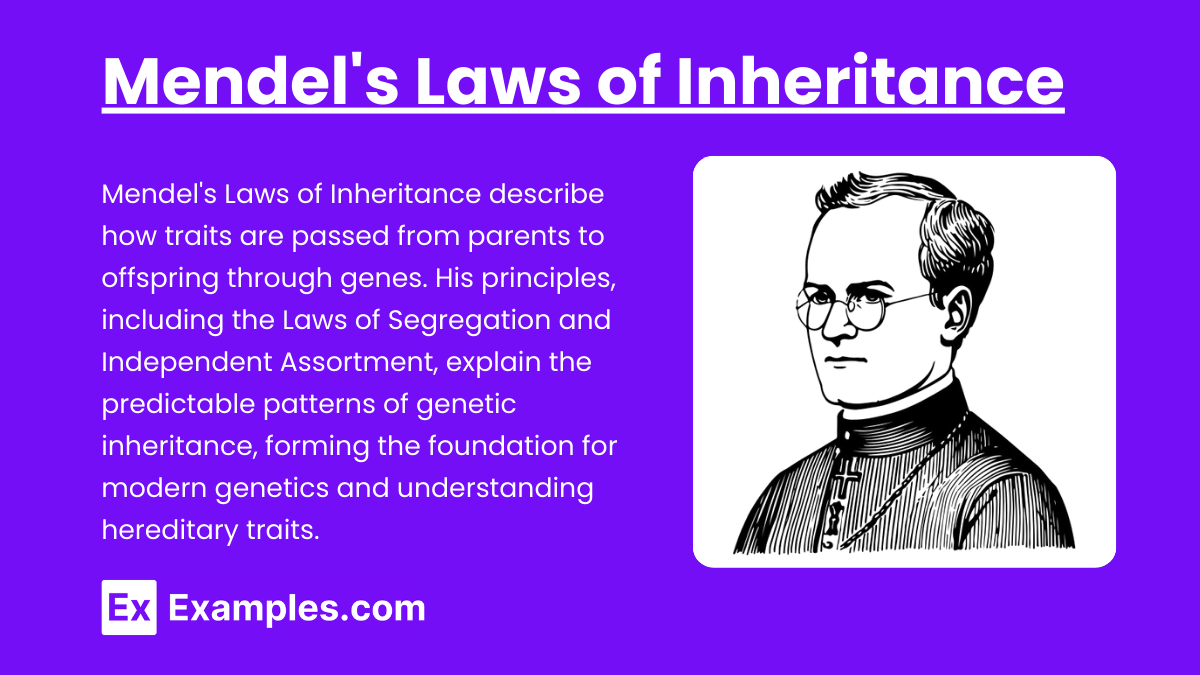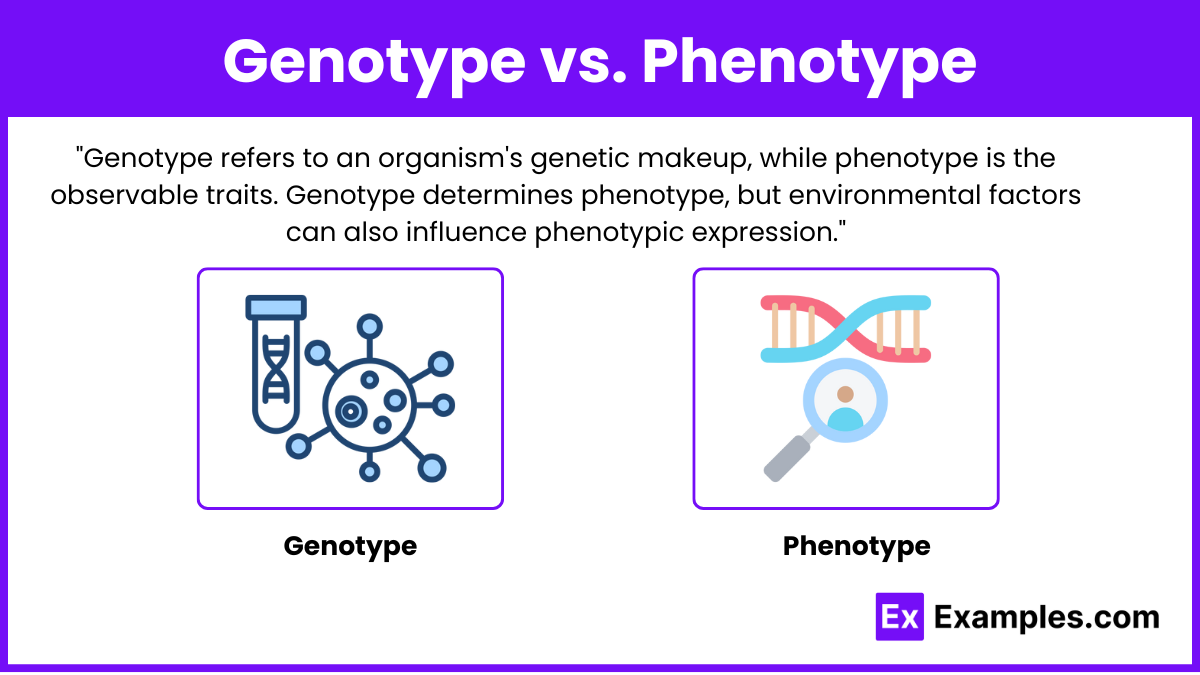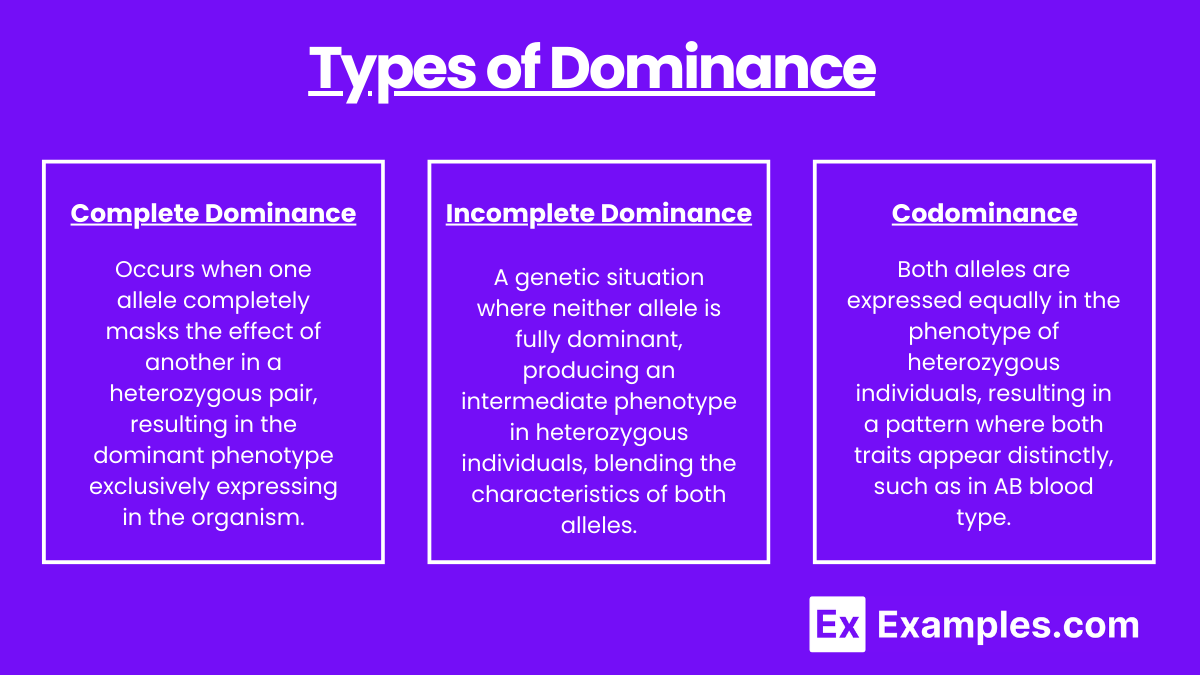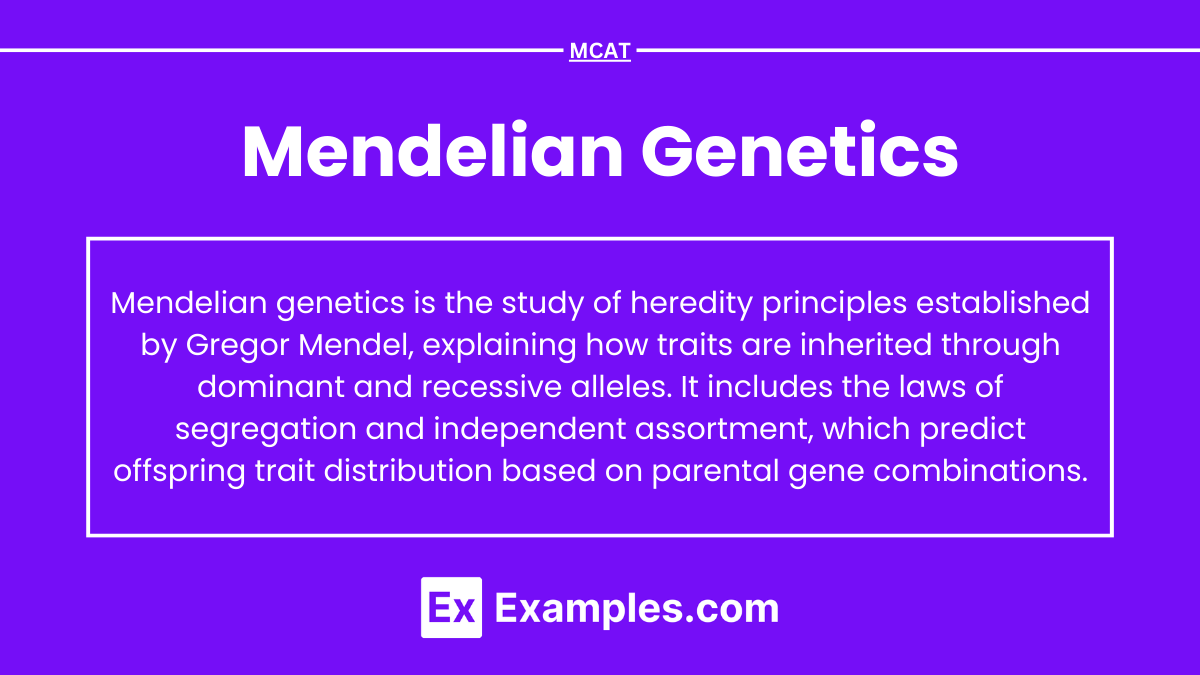Mendelian Genetics

- Notes
Preparing for the MCAT demands a solid grasp of Mendelian Genetics, which forms the basis for understanding genetic inheritance patterns in Organ Systems. Mastering concepts such as dominant and recessive traits, as well as the laws of segregation and independent assortment, equips you with essential insights into genetic transmission, a key area for excelling on the MCAT and interpreting complex inheritance patterns.
Learning Objective
“In studying ‘Mendelian Genetics’ for the MCAT, you should develop an understanding of the foundational principles of genetic inheritance, including Mendel’s laws of segregation and independent assortment. Explore concepts of dominant and recessive alleles, genotype and phenotype relationships, and Punnett squares for predicting genetic outcomes. Evaluate how patterns of inheritance govern genetic variability and influence phenotypic traits. Additionally, understand how these genetic principles apply to complex inheritance patterns, such as incomplete dominance and codominance. Apply this knowledge to interpret genetic pedigree charts, solve MCAT practice questions on inheritance patterns, and analyze scenarios involving genetic disorders and trait distribution.”
1. Mendel’s Laws of Inheritance

- Law of Segregation: Each organism inherits two alleles for each trait, one from each parent. During gamete formation, these alleles segregate so each gamete carries only one allele for each trait, ensuring offspring inherit alleles from both parents.
- Law of Independent Assortment: Genes for different traits are passed independently during gamete formation, creating varied trait combinations in offspring. However, this applies primarily to genes located on different chromosomes or far apart on the same chromosome.
2. Genotype vs. Phenotype

- Genotype: Represents the genetic makeup, or alleles, an individual inherits for a particular trait. Examples include homozygous dominant (AA), homozygous recessive (aa), and heterozygous (Aa) genotypes.
- Phenotype: The observable expression of a trait, influenced by genotype and environment. Dominant alleles mask recessive ones in heterozygotes, resulting in varied physical traits (e.g., brown vs. blue eyes).
3. Types of Dominance

- Complete Dominance: The dominant allele fully masks the recessive allele in heterozygotes, resulting in the expression of only the dominant trait.
- Incomplete Dominance: Neither allele completely dominates in heterozygotes, resulting in a blend of traits (e.g., red and white flowers producing pink).
- Codominance: Both alleles are equally expressed in heterozygotes. An example is the AB blood type in humans, where both A and B alleles contribute to the phenotype.
4. Non-Mendelian Patterns

- Epistasis: One gene can interfere with or modify the expression of another gene, such as in coat color patterns in animals where one gene can mask others.
- Pleiotropy: A single gene affects multiple traits. For example, mutations in the Marfan syndrome gene affect the heart, bones, and eyes.
- Polygenic Inheritance: Multiple genes contribute to a single trait, leading to a wide range of phenotypes, as seen in skin color and height.
- Sex-Linked Traits: Traits associated with genes on sex chromosomes (X and Y) show unique inheritance patterns. X-linked recessive traits, like color blindness, appear more frequently in males due to their single X chromosome.
Examples
Example 1: Dominant and Recessive Traits in Pea Plants
- Mendel observed that certain traits, like flower color, appear in a predictable ratio.
- In his experiments with pea plants, he noticed that crossing a purple-flowered plant with a white-flowered plant consistently produced purple flowers.
- This led him to classify traits as dominant (purple) and recessive (white).
Example 2: Law of Segregation in Allele Inheritance
- Mendel’s Law of Segregation states that each individual has two alleles for each gene, which separate during gamete formation.
- During fertilization, these alleles recombine, allowing for genetic variation.
- This law explains why offspring can inherit different combinations of alleles from their parents.
Example 3: Dihybrid Cross and Independent Assortment
- Mendel’s Law of Independent Assortment states that genes for different traits can segregate independently during gamete formation.
- He demonstrated this through dihybrid crosses, such as crossing pea plants with different traits for seed shape and color.
- His results showed a 9:3:3:1 ratio, suggesting that each trait is inherited independently.
Example 4: Punnett Squares and Predicting Genotype Ratios
- Punnett squares are tools used to predict the genotype and phenotype ratios of offspring from parental genotypes.
- For example, crossing two heterozygous plants (Rr x Rr) for a single gene results in a 3:1 phenotype ratio.
- This tool helps in understanding the probability of inheriting specific traits.
Example 5: Pedigree Analysis in Human Genetics
- Pedigrees are diagrams used to study inheritance patterns across generations in humans.
- By analyzing pedigrees, geneticists can determine whether traits are dominant, recessive, autosomal, or sex-linked.
- This analysis is essential for understanding inherited conditions and predicting the risk for offspring.
Practice Questions
Question 1: What does Mendel’s Law of Segregation explain in terms of inheritance? A) The independent inheritance of multiple genes
B) The separation of alleles during gamete formation
C) The dominance of certain alleles over others
D) The linkage of genes on the same chromosome
Answer: B) The separation of alleles during gamete formation
Explanation:
Mendel’s Law of Segregation states that each parent has two alleles for each gene, which separate during the formation of gametes (sperm or eggs). This ensures that each gamete carries only one allele for each gene, allowing genetic variation in offspring.
Question 2: In a Punnett square analysis, if two heterozygous plants (Rr x Rr) are crossed, what percentage of the offspring would have the recessive phenotype? A) 25%
B) 50%
C) 75%
D) 100%
Answer: A) 25%
Explanation:
In a cross between two heterozygous (Rr) plants, the Punnett square shows a genotype ratio of 1:2:1 (RR : Rr : rr). Since the recessive phenotype only appears in the rr genotype, 25% of the offspring will exhibit the recessive trait.
Question 3: Which of the following would indicate a sex-linked recessive trait in a pedigree? A) Both males and females equally affected
B) Only females are affected
C) Males are more frequently affected than females
D) All individuals in a generation are affected
Answer: C) Males are more frequently affected than females
Explanation:
In sex-linked recessive inheritance, traits are carried on the X chromosome. Since males have only one X chromosome, they are more likely to express the trait if they inherit the recessive allele. Females have two X chromosomes, so they would need two copies of the recessive allele to express the trait, making them less frequently affected.
Preparing for the MCAT demands a solid grasp of Mendelian Genetics, which forms the basis for understanding genetic inheritance patterns in Organ Systems. Mastering concepts such as dominant and recessive traits, as well as the laws of segregation and independent assortment, equips you with essential insights into genetic transmission, a key area for excelling on the MCAT and interpreting complex inheritance patterns.
Learning Objective
"In studying 'Mendelian Genetics' for the MCAT, you should develop an understanding of the foundational principles of genetic inheritance, including Mendel's laws of segregation and independent assortment. Explore concepts of dominant and recessive alleles, genotype and phenotype relationships, and Punnett squares for predicting genetic outcomes. Evaluate how patterns of inheritance govern genetic variability and influence phenotypic traits. Additionally, understand how these genetic principles apply to complex inheritance patterns, such as incomplete dominance and codominance. Apply this knowledge to interpret genetic pedigree charts, solve MCAT practice questions on inheritance patterns, and analyze scenarios involving genetic disorders and trait distribution."
1. Mendel's Laws of Inheritance

Law of Segregation: Each organism inherits two alleles for each trait, one from each parent. During gamete formation, these alleles segregate so each gamete carries only one allele for each trait, ensuring offspring inherit alleles from both parents.
Law of Independent Assortment: Genes for different traits are passed independently during gamete formation, creating varied trait combinations in offspring. However, this applies primarily to genes located on different chromosomes or far apart on the same chromosome.
2. Genotype vs. Phenotype

Genotype: Represents the genetic makeup, or alleles, an individual inherits for a particular trait. Examples include homozygous dominant (AA), homozygous recessive (aa), and heterozygous (Aa) genotypes.
Phenotype: The observable expression of a trait, influenced by genotype and environment. Dominant alleles mask recessive ones in heterozygotes, resulting in varied physical traits (e.g., brown vs. blue eyes).
3. Types of Dominance

Complete Dominance: The dominant allele fully masks the recessive allele in heterozygotes, resulting in the expression of only the dominant trait.
Incomplete Dominance: Neither allele completely dominates in heterozygotes, resulting in a blend of traits (e.g., red and white flowers producing pink).
Codominance: Both alleles are equally expressed in heterozygotes. An example is the AB blood type in humans, where both A and B alleles contribute to the phenotype.
4. Non-Mendelian Patterns

Epistasis: One gene can interfere with or modify the expression of another gene, such as in coat color patterns in animals where one gene can mask others.
Pleiotropy: A single gene affects multiple traits. For example, mutations in the Marfan syndrome gene affect the heart, bones, and eyes.
Polygenic Inheritance: Multiple genes contribute to a single trait, leading to a wide range of phenotypes, as seen in skin color and height.
Sex-Linked Traits: Traits associated with genes on sex chromosomes (X and Y) show unique inheritance patterns. X-linked recessive traits, like color blindness, appear more frequently in males due to their single X chromosome.
Examples
Example 1: Dominant and Recessive Traits in Pea Plants
Mendel observed that certain traits, like flower color, appear in a predictable ratio.
In his experiments with pea plants, he noticed that crossing a purple-flowered plant with a white-flowered plant consistently produced purple flowers.
This led him to classify traits as dominant (purple) and recessive (white).
Example 2: Law of Segregation in Allele Inheritance
Mendel's Law of Segregation states that each individual has two alleles for each gene, which separate during gamete formation.
During fertilization, these alleles recombine, allowing for genetic variation.
This law explains why offspring can inherit different combinations of alleles from their parents.
Example 3: Dihybrid Cross and Independent Assortment
Mendel’s Law of Independent Assortment states that genes for different traits can segregate independently during gamete formation.
He demonstrated this through dihybrid crosses, such as crossing pea plants with different traits for seed shape and color.
His results showed a 9:3:3:1 ratio, suggesting that each trait is inherited independently.
Example 4: Punnett Squares and Predicting Genotype Ratios
Punnett squares are tools used to predict the genotype and phenotype ratios of offspring from parental genotypes.
For example, crossing two heterozygous plants (Rr x Rr) for a single gene results in a 3:1 phenotype ratio.
This tool helps in understanding the probability of inheriting specific traits.
Example 5: Pedigree Analysis in Human Genetics
Pedigrees are diagrams used to study inheritance patterns across generations in humans.
By analyzing pedigrees, geneticists can determine whether traits are dominant, recessive, autosomal, or sex-linked.
This analysis is essential for understanding inherited conditions and predicting the risk for offspring.
Practice Questions
Question 1: What does Mendel's Law of Segregation explain in terms of inheritance? A) The independent inheritance of multiple genes
B) The separation of alleles during gamete formation
C) The dominance of certain alleles over others
D) The linkage of genes on the same chromosome
Answer: B) The separation of alleles during gamete formation
Explanation:
Mendel's Law of Segregation states that each parent has two alleles for each gene, which separate during the formation of gametes (sperm or eggs). This ensures that each gamete carries only one allele for each gene, allowing genetic variation in offspring.
Question 2: In a Punnett square analysis, if two heterozygous plants (Rr x Rr) are crossed, what percentage of the offspring would have the recessive phenotype? A) 25%
B) 50%
C) 75%
D) 100%
Answer: A) 25%
Explanation:
In a cross between two heterozygous (Rr) plants, the Punnett square shows a genotype ratio of 1:2:1 (RR : Rr : rr). Since the recessive phenotype only appears in the rr genotype, 25% of the offspring will exhibit the recessive trait.
Question 3: Which of the following would indicate a sex-linked recessive trait in a pedigree? A) Both males and females equally affected
B) Only females are affected
C) Males are more frequently affected than females
D) All individuals in a generation are affected
Answer: C) Males are more frequently affected than females
Explanation:
In sex-linked recessive inheritance, traits are carried on the X chromosome. Since males have only one X chromosome, they are more likely to express the trait if they inherit the recessive allele. Females have two X chromosomes, so they would need two copies of the recessive allele to express the trait, making them less frequently affected.

